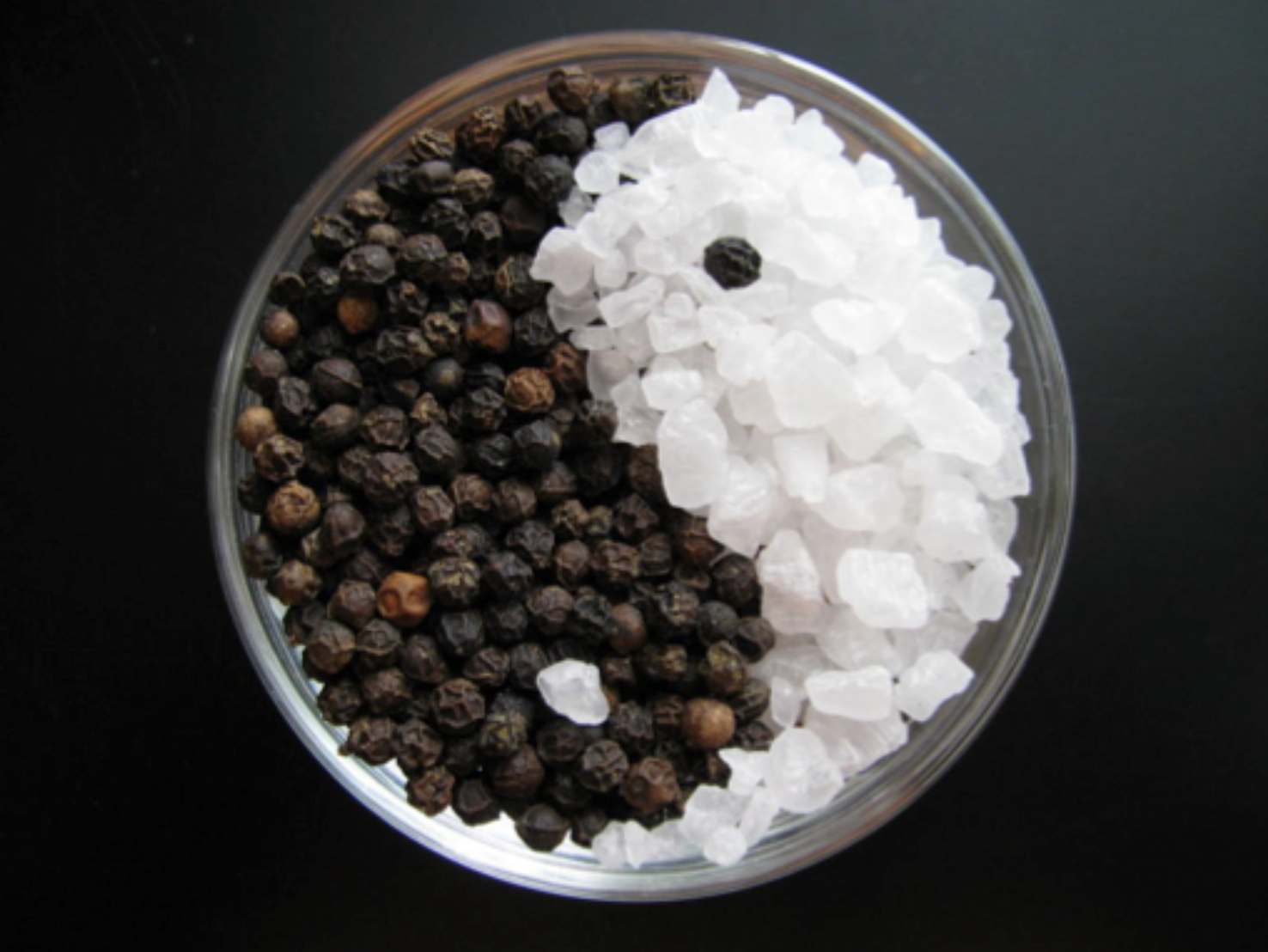The Science of Seasoning
Almost everywhere in the world, when we sit down at a dining table or in a restaurant, we are met by two ubiquitous seasonings: Black pepper and salt. How did these seasonings come to rule them all? Yes, they taste good, but there’s more to it. Their real value is how they interact with other foods.
Pepper Piper nigrum
Pepper main component is piperine, which causes mild irritation and inflammation in the mouth when consumed. That inflammation leads to additional sensitivity of our taste receptors. Saltiness, acidity (i.e., sourness), and feelings of hot and cold are generally the most impacted by this inflammation; all of these sensations are enhanced.
Salt
Sodium chloride Salt is one of the five basic tastes (along with bitter, sweet, sour, and umami or savory). It enhances foods by essentially turning up the volume of their salty flavours. Salt can also dial down the taste of bitter foods by suppressing our perception of bitterness, and balance other tastes like sweet and sour (salt added to desserts or vinaigrette, for example). Salt also unravels (or denatures) the tight spiral structure of proteins, making their flavors tastier and more aromatic.
Even the texture of salt enhances the taste of food. Flake salts like Maldon, ground Himalayan Rock Salt, or our incredible Kampot Fleur de Sel sprinkled over a green salad transmit crunchy bursts of saltiness that enhance the soft texture and mild flavors of lettuce leaves and other vegetables. And surprisingly, salt brings out aromas, too, because it helps release aroma molecules from food into the air. These stimulate our olfactory receptors, helping us to smell things.
How they work together
So pepper wakes up our taste buds and adds sensitivity to our taste receptors. Salt can then do its job of turning up the volume of salty food or turning down the volume of bitter tasting foods.
Kampot Pepper (the world’s best pepper) keeps your taste buds awake longer than any other pepper, allowing you to enjoy the tastes of food for longer.
And a big bonus: whereas your average peppercorn has very little flavour, Kampot Pepper reveals outstanding floral, eucalyptus and citrus flavours, further enhancing your food flavours.
When to use them
There are two main times to think about seasoning – the beginning and the end. For slow-cooked dishes it’s a good idea to get some salt and pepper in early so they can spread through the whole dish over time. For most other foods, seasoning at the end is the best way to go.

